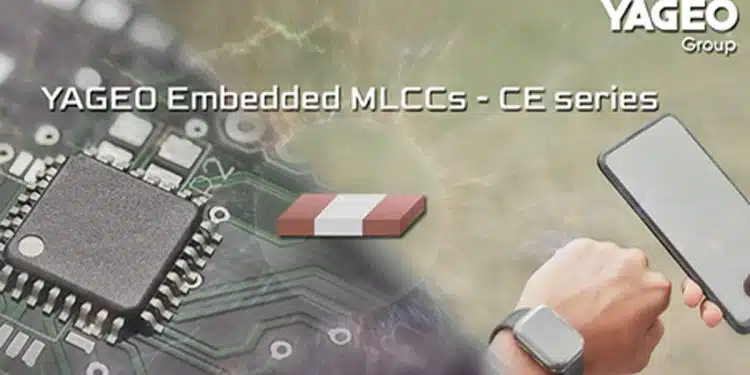With the rapid development of electronic devices, besides lightweight and miniaturization features, multi-functionality, and high-frequency applications are the main trends nowadays. To enable high-speed signal transmission with better quality and efficiency, the MLCC ceramic capacitor embedding technology has become crucial in the manufacturing process.
YAGEO Group has launched the CE series MLCCs to meet the growing demand.
The CE series embedded MLCC not only effectively reduces the space required for the entire module assembly, but it also achieves excellent decoupling effects and maintains power integrity (PI) in the high-frequency range.
Embedded MLCCs are placed closer to the ICs, and the parasitic inductance is reduced by reducing the current loop length and still maintaining good function when the electronic system operates in the high-frequency range.
Therefore, it is regarded as the solution to many problems in today’s electronics industry. This embedded type has successfully realized the integration of high-frequency circuits and promoted the popularization of related applications.
In addition to the overall product dimension, the most important factors for a good embedded MLCC are the accurate controls of dimension and flatness of the end termination. YAGEO’s CE series embedded MLCCs adopt plated copper as the outmost layer in the end termination structure, with the most advanced material and processing technologies for end termination, YAGEO can customize the dimension specification according to the needs of different customers.
A typical part is 0402/X5R/6.3V/100nF with 0.2 mm thickness, more parts are available with YAGEO’s technologies.































